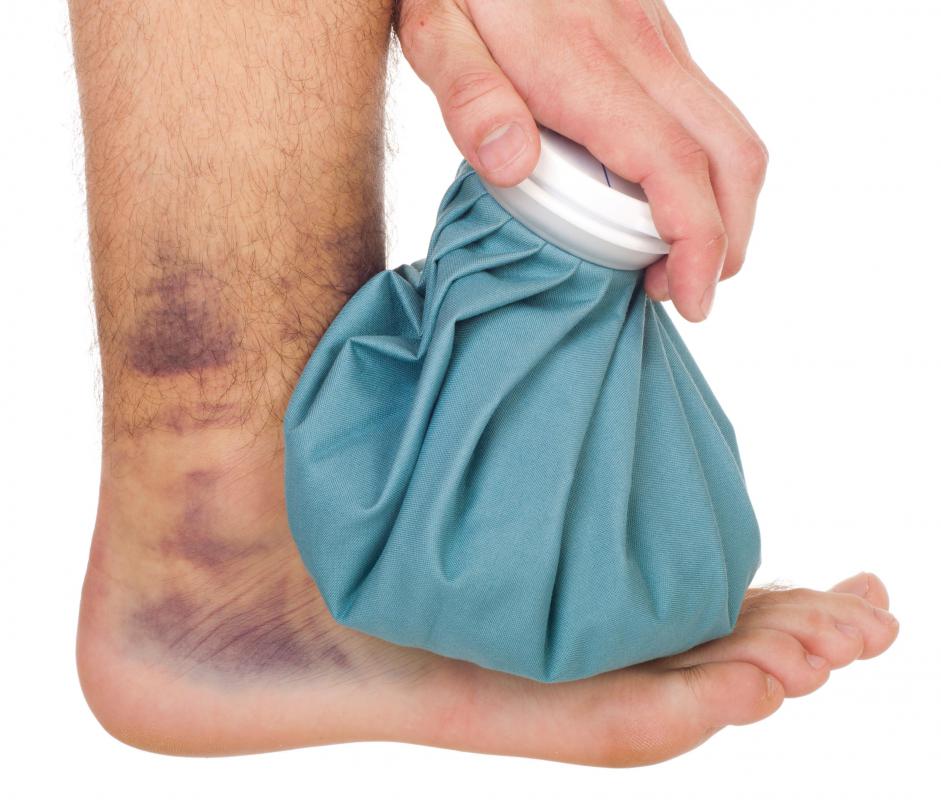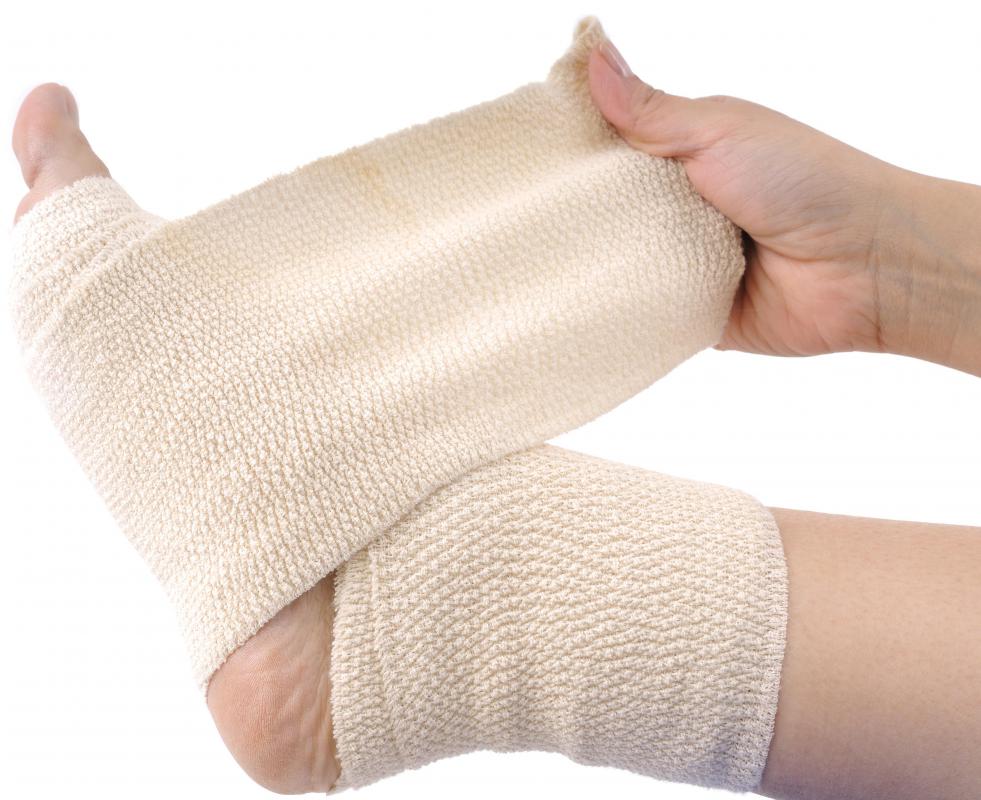At TheHealthBoard, we're committed to delivering accurate, trustworthy information. Our expert-authored content is rigorously fact-checked and sourced from credible authorities. Discover how we uphold the highest standards in providing you with reliable knowledge.
How do I Treat a Swollen Ankle?
Long-term treatment for a swollen ankle has to depend on what is creating the inflammation. There are a number of reasons why ankles can swell. This can be a sign that an ankle sprain has occurred, or it may be symptomatic of a broken bone in the foot or ankle. It could also suggest ankle damage of other types, or the ankle may be swollen due to water retention or edema. There are some guidelines for initial treatment of a swollen ankle, and some suggestions on when to get expert treatment and diagnosis.
Sometimes an ankle is swollen and swelling may be dramatic. There may or may not be pain associated with the swelling. If pain is present, it may hurt most when weight is placed on the foot, or when the foot moves. Pain occurring even when the ankle is not having weight placed upon it, suggests things like fracture or serious sprain. Many times people have a good idea how they may have injured themselves, but occasionally, the ankle will swell for no obvious reason, and people will suddenly notice considerable puffiness in the ankle region.

The first step to treat a swollen ankle and determine what to do is to get off the foot. If possible, lie on a floor, couch, or other and place a pillow or two underneath the foot. Use ice on the swelling for 15 to 20 minutes, to see if that reduces the swelling, unless pain is so severe it is creating nausea or shock reaction, or there is clear evidence of a dislodged bone or bone appearing through skin. When these conditions are present people should immediately proceed to a doctor or emergency room.

When the cause is nebulous and severe pain or the conditions described above are not present, take a moment to inspect both feet. Look for a few things like evidence of insect or reptile bite, which may indicate allergic reaction or contact with a poisonous snake. With either of these conditions, symptoms could quickly progress, and people should get medical help immediately. Also, notice if both ankles are swollen which might suggest water retention.

After elevating the swollen ankle and icing it, determine if swelling is better, worse or the same. Unless both ankles are swollen, it is better at this point to get to a doctor, particularly if the ankle is painful. In fact having someone else contact a doctor while the ankle is being iced and the foot elevated is a good idea. In many cases, if an ankle injury is suspected, doctors want to look at it, and possibly use x-ray to determine if break or sprain is present. It’s not always possible to tell from the outside what type of injuries may have occurred.

With dual ankle swelling that suggests water retention, it’s also important to consult with a doctor. This may be signs of an emerging condition, it could suggests kidney problems, which in turn may be a sign of heart problems, or it might be symptomatic of other things. Provided the swelling seems to lessen with elevation and is not present elsewhere in the body, it may not necessarily mean getting emergency care, but people are still wise to at least phone a doctor, describe their symptoms and let the doctor determine the best course of treatment.

Sometimes when doctors are contacted, they tell people to wait a day to see if symptoms improve. While waiting, people may want to continue to use ice every three to four hours, remain off the swollen ankle and to try to keep it elevated. Compression or a stabilizing bandage may or may not be a good idea. Sometimes this can cause greater swelling or if the ankle swells more it may create too much pressure. If a stabilizing bandage is used, make sure to check it every few hours to be certain it is not compressing the skin in an uncomfortable way.
AS FEATURED ON:
AS FEATURED ON:















Discussion Comments
@heavanet- It sounds like you already know what you should do to get help for your ankle. I think you should make an appointment with your doctor as soon as possible, because you could have damage to a tendon or bone in your ankle that needs to be diagnosed and treated.
I know that you feel like your doctor will give you a hard time about not seeing him sooner for your ankle injury, but you really shouldn't let that stop you from getting the care you need. Doctors confront these issues all the time for many reasons. People are often scared to seek medical help when they are sick or in pain, or they may not have the money to pay for treatment. Either way, doctors are use to this. What's important now is that you realize you have a problem from your previous injury, and you need to get your ankle checked out before it gets worse.
I had an ankle injury several months ago that I assumed had healed. I never went to the doctor, but instead treated it myself with cold compresses and rest. Now my ankle swells frequently, and I'm scared to go to the doctor for fear that is damage that I made worse by waiting. What should I do?
If I do go to the doctor now, how should I approach the issue since I put it off so long? I feel embarrassed about the situation, but I am sure that continuing to put it off will only make my ankle worse.
Post your comments